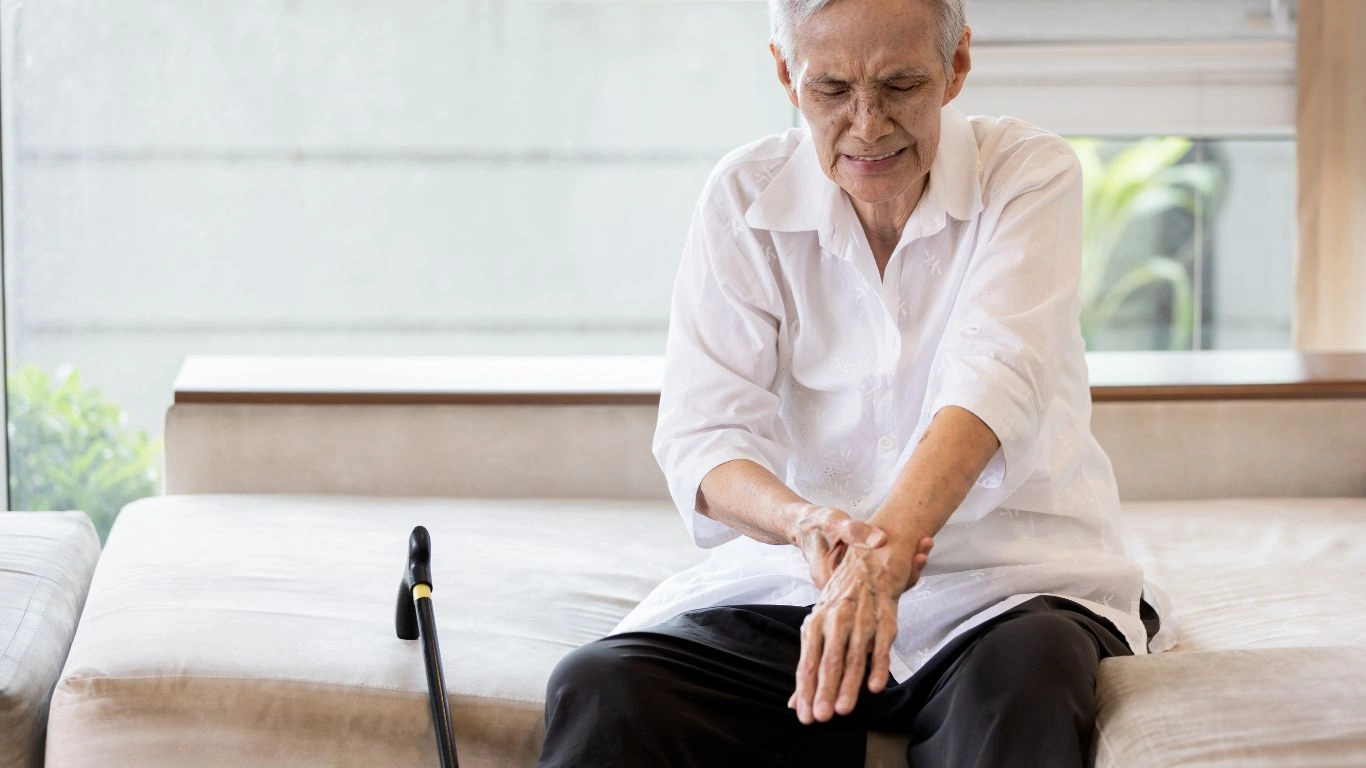Improve Rheumatoid Arthritis with Ergonomics for Less Pain & Better Life
Living with rheumatoid arthritis (RA) can often feel like navigating a world that’s out of sync with your body. As someone who’s spent years diagnosing, treating, and helping people manage this challenging condition, I can tell you that understanding its impact on daily life is crucial. RA is not just about pain in the joints; it’s about how it can change the way you move, interact with the world, and, ultimately, the way you live. And that’s where ergonomics—an often overlooked yet incredibly important element—comes in. In this article, I’ll walk you through why ergonomics matters so much for anyone dealing with rheumatoid arthritis, and how making simple adjustments can dramatically improve your quality of life.
The Role of Ergonomics in Managing Rheumatoid Arthritis
When most people think about ergonomics, they probably imagine office chairs or adjustable desks. But for those of us living with rheumatoid arthritis, ergonomics is about much more. It’s about making your environment work for you, especially when RA makes everything feel like a battle—getting out of bed, typing at a computer, lifting groceries, or even just holding a pen can become everyday challenges. By understanding how to make small, purposeful changes to your routine, you can reduce strain on your joints, prevent unnecessary flare-ups, and ultimately make life a lot more manageable.
What is Ergonomics, and Why Does it Matter for RA?
At its core, ergonomics is the science of designing your environment to fit your needs. For someone with rheumatoid arthritis, this means setting up a workspace, home, and daily routines that help reduce strain on the body and promote joint health. By making your space more “RA-friendly,” you can protect your joints from unnecessary stress and reduce the risk of further injury or pain. It’s like giving your body the support it needs to work smarter, not harder.

For example, think about how much time you spend sitting during the day—whether it’s at a desk, in a car, or on the couch. Poor posture and incorrect sitting positions can cause unnecessary strain on the back, shoulders, and neck. Over time, this can exacerbate the pain and discomfort caused by rheumatoid arthritis. Ergonomics aims to reduce that strain, ensuring that your body stays aligned and that your joints don’t have to work harder than they need to.
How RA Affects Your Body’s Movements
Before we dive into the specifics of ergonomics, it’s important to understand how rheumatoid arthritis impacts your body. RA is an autoimmune disease that primarily affects the joints, causing inflammation, pain, and stiffness. Over time, this inflammation can lead to joint damage, making it harder to move freely. You might find that simple tasks—things you used to take for granted—are suddenly more difficult. That’s where ergonomic principles come into play: they help reduce strain and make those movements easier and less painful.
It’s easy to forget how much work your joints do every day, but when they’re inflamed, even lifting a cup of coffee can feel like an uphill battle. That’s why understanding the relationship between RA and movement is key to making ergonomic adjustments that protect your joints.
Practical Tips for Ergonomics with Rheumatoid Arthritis
Now that we’ve covered the basics of why ergonomics matters, let’s talk about some specific ways you can make adjustments in your life to accommodate RA. These tips are simple but effective ways to improve comfort and prevent flare-ups.
Setting Up an Ergonomic Workspace
If you work at a desk or spend a lot of time sitting, your workspace is one of the first places to start. Having the right setup can help keep you comfortable and prevent joint strain. Let’s go over a few key points to consider:
- Chair height: Your feet should be flat on the ground, with your knees at about a 90-degree angle. If your chair doesn’t adjust, consider getting a cushion or footrest to support your posture.
- Keyboard and mouse placement: Position your keyboard and mouse so that your arms are at a 90-degree angle. Avoid reaching or extending your arms too much, as this can increase shoulder strain.
- Monitor position: The top of your monitor should be at eye level to prevent neck strain. Make sure you’re not craning your neck or slouching forward to see the screen.

Adjusting Your Home for Better Mobility
At home, small adjustments can go a long way in making life easier. Here are some things to consider:
- Use supportive seating: Whether it’s a couch, a chair, or a bed, make sure it’s providing proper support. You might find that a firmer chair or mattress helps reduce joint pain.
- Tool and appliance positioning: Keep frequently used items at waist height to avoid reaching or bending. This can reduce strain on your back, knees, and shoulders.
- Easy-to-use tools: Look for tools with larger handles, such as pens, scissors, and cooking utensils. These are easier to grip and put less stress on your hands and wrists.
By making these simple changes, you’ll create a more comfortable environment that works with your body’s needs. The goal is to minimize the physical demands placed on your joints while still being able to move freely and comfortably through your daily routine.

Living with rheumatoid arthritis doesn’t mean you have to live in constant pain or discomfort. With the right ergonomic adjustments, you can create a space and routine that supports your joints, reduces strain, and helps improve your overall quality of life. In the next section, we’ll dive deeper into how to incorporate ergonomics into your daily habits and routines, making life with RA a little easier, one step at a time.
Incorporating Ergonomics into Your Daily Routine
By now, we’ve covered the basics of why ergonomics is so important for people with rheumatoid arthritis and how to set up a more supportive environment. But let’s be real—those ergonomic adjustments won’t do you much good if you don’t weave them into your daily routine. That’s where the magic happens. By building small, ergonomic habits into your day, you can make life with RA much more manageable. In this section, I’ll walk you through how to incorporate these strategies seamlessly into your daily tasks—whether you’re working, cooking, or just relaxing at home.
Making Your Morning Routine RA-Friendly
Starting your day can be tough when your joints are stiff, and the thought of moving around seems overwhelming. Trust me, I get it. But with the right ergonomic tweaks, you can ease into the day without putting extra strain on your joints. Here are some simple changes that can make a world of difference:
- Set up your bathroom space: Before you even think about getting out of bed, make sure your bathroom is ergonomically friendly. Consider installing grab bars or a shower chair if you have balance issues. These small adjustments can help you move safely and comfortably when you start your day.
- Get the right tools: Look for brushes, toothbrushes, and other bathroom tools with larger handles. This makes them easier to grip and prevents hand strain.
- Limit bending and stretching: Keep your personal care products at waist height so you don’t have to bend over to reach for things. You’d be surprised how much this simple act can reduce stress on your knees and back!

Ergonomics in the Workplace: Creating a Comfortable Workday
Let’s face it—whether you work from home or commute to an office, we spend a lot of time at our desks. It’s easy to forget how much strain we’re putting on our bodies by sitting improperly or using inefficient tools. But when you live with RA, every little thing matters. Even though the workplace can be a challenging space to make ergonomic changes, there’s a lot you can do to make your workday more comfortable and joint-friendly. Here’s how:
- Invest in an ergonomic chair: A good chair is worth its weight in gold. Look for one with lumbar support, adjustable armrests, and a seat that allows your feet to be flat on the floor. This will prevent unnecessary strain on your back, neck, and knees.
- Use a laptop stand or separate keyboard: If you’re working from a laptop, a laptop stand can help raise your screen to eye level, reducing neck strain. If possible, use a separate keyboard and mouse to avoid the awkward wrist angles that often come with typing directly on your laptop.
- Take regular breaks: The importance of getting up and moving cannot be overstated. Set a timer to remind yourself to take a 5-10 minute break every hour. This gives your joints a chance to move and stretch, reducing the risk of stiffness or pain.
For people with RA, these small changes in the workplace can make a significant impact. And even if you’re working from home, creating a comfortable workspace is just as important for long-term joint health.

Smart Cooking and Cleaning Habits
If you’re like me, spending hours in the kitchen cooking meals or scrubbing the floors might not sound like fun. It’s not just tiring, but those repetitive movements can also worsen the pain and stiffness in your joints. But fear not—ergonomics has you covered, even when you’re in the kitchen or tackling household chores.
- Use assistive devices: There are plenty of kitchen tools designed to make cooking easier on your hands. For example, you can find utensils with larger, cushioned handles that are easier to grip. There are also jar openers, automatic can openers, and even adjustable cutting boards that reduce the need for awkward wrist movements.
- Adjust your posture: Make sure you’re standing up straight when you cook. If you’re chopping vegetables or stirring something on the stove, use a surface that’s at the right height. If your counter is too high or too low, try using a step stool or adjust the height with portable risers.
- Use ergonomic cleaning tools: There are mop handles, vacuum cleaners, and scrubbers designed to reduce the strain on your wrists, back, and shoulders. Look for tools with longer handles or ergonomic grips to make cleaning less of a burden on your joints.
Ergonomics for Better Rest and Sleep
As much as we talk about staying active, one of the most important parts of managing rheumatoid arthritis is getting proper rest. Sleep can be a real challenge when you’re dealing with pain, stiffness, and discomfort. But adjusting your sleeping environment with ergonomic principles can help you get the rest you need. Here’s how:
Choosing the Right Mattress and Pillow
Your mattress plays a critical role in how your joints feel when you wake up. A mattress that’s too firm or too soft can put unnecessary pressure on your joints, especially your back and hips. Look for a medium-firm mattress that supports your spine’s natural curve, and make sure your pillow supports your neck and head without causing your shoulders to strain.
If you have trouble sleeping because of joint pain, try adjusting your sleeping positions. For instance, sleeping with a pillow between your knees (if you sleep on your side) or under your knees (if you sleep on your back) can take pressure off your lower back and hips.

Creating a Restful Environment
Lighting, temperature, and noise levels can all impact the quality of your sleep. Make sure your bedroom is a peaceful, calming space by minimizing distractions. Keep the room cool and dark to help your body relax and get into a deeper sleep. This simple act of creating a soothing environment can have a significant effect on how well you rest and recover from the day.
Conclusion
Living with rheumatoid arthritis doesn’t mean you have to give up on comfort or functionality. With a few ergonomic adjustments, you can transform your daily life and make each task a little bit easier. From your morning routine to your workday, to the way you rest, these simple changes can help reduce pain, minimize strain on your joints, and give you the energy you need to enjoy life to the fullest. Remember, it’s not about perfection—it’s about making your world a little more RA-friendly, one step at a time.
Case Studies & Real-Life Examples
Nothing speaks louder than real-life experiences. While ergonomic adjustments can sound great in theory, it’s important to see how they translate into the lives of those actually living with rheumatoid arthritis. I’ve worked with many patients over the years who have transformed their daily lives through ergonomic changes. Let me share a couple of stories to illustrate how impactful these changes can be.
Case Study 1: Lisa’s Journey to Pain-Free Mornings
Lisa, a 45-year-old mother of two, had been struggling with RA for over a decade. Her mornings were particularly difficult; she’d wake up with stiff hands and sore joints that made even brushing her teeth feel like a challenge. After discussing ergonomic adjustments, we focused on two main areas: her workspace and her morning routine.
- Workspace Changes: We made a few tweaks to her office setup—adjusting her chair height, getting an ergonomic keyboard, and adding wrist support for her mouse. These changes helped reduce the strain on her joints while she worked, particularly her wrists and neck.
- Morning Routine Changes: We also tackled her morning routine by adding a grab bar to the shower and replacing her toothbrush with an electric one that had a thicker handle. These simple adjustments made it so that Lisa didn’t feel like she was fighting her body every time she started her day.
Within weeks, Lisa reported a significant decrease in pain during the mornings. She could get through her daily tasks with greater ease, and she felt more energized, which was a major improvement for her family life.
Case Study 2: Mark’s Battle with Desk Job Discomfort
Mark, a 55-year-old graphic designer, had been dealing with RA for a few years. His job required long hours at the computer, and over time, he began experiencing severe pain in his wrists and shoulders. After several visits to physical therapy, we decided to adjust his desk ergonomics and introduce a few helpful tools:
- Desk Setup: We recommended a standing desk converter so that he could alternate between sitting and standing throughout the day, relieving the pressure on his lower back. A wrist rest and an ergonomic mouse were added to minimize strain on his wrists.
- Movement Breaks: We also incorporated short 5-minute breaks every hour, using a timer to remind him. These breaks allowed Mark to stretch, stand up, and reset his posture, which reduced stiffness in his neck and shoulders.
Mark was amazed at how much better he felt after making these changes. His pain lessened, and he reported feeling much more productive and focused. He didn’t have the constant distractions of pain and stiffness, allowing him to fully concentrate on his work.
Key Takeaways: What You Need to Remember
If there’s one thing I want you to take away from this article, it’s that managing rheumatoid arthritis isn’t just about medication and treatments. Yes, those are essential, but the way you approach your daily life can have just as much of an impact on your health. Ergonomics can be the key to reducing strain, preventing flare-ups, and improving overall quality of life. Here’s what to remember:
- Make Small Adjustments: Start small. It could be adjusting the height of your chair, investing in ergonomic tools, or rethinking your daily routines. Even tiny changes can make a big difference in how your joints feel.
- Listen to Your Body: Everyone’s experience with RA is different. What works for one person may not work for another, so don’t be afraid to experiment with different adjustments until you find what works best for you.
- Consistency is Key: Incorporating ergonomics into your life isn’t a one-time thing. It’s about creating habits that you stick to. Over time, these habits will become second nature and can drastically reduce pain and discomfort.
- Rest is Just as Important: Ergonomics isn’t just about staying active. You also need to ensure you’re getting enough rest, with a supportive sleeping environment that gives your joints the time they need to recover.
FAQs
Q: Can ergonomic changes really make a difference in managing rheumatoid arthritis?
A: Absolutely! Small adjustments in how you sit, sleep, and move can significantly reduce joint strain, prevent flare-ups, and enhance mobility. It’s all about creating a supportive environment for your body.
Q: How do I know what ergonomic changes are best for me?
A: Start by listening to your body. If you feel pain or discomfort after certain activities, that’s a clue that you may need to adjust how you’re doing them. Working with a physical therapist or an ergonomic specialist can also help you pinpoint the best changes for your needs.
Q: Can I make ergonomic changes at work even if my employer doesn’t offer them?
A: Yes! There are plenty of simple changes you can make without your employer’s permission, like adjusting your chair, using an ergonomic keyboard or mouse, and taking regular breaks. If you need additional support, consider discussing it with HR or looking into office equipment that suits your needs.
Bonus: Additional Resources or DIY Tips
As you continue to explore the world of ergonomics and rheumatoid arthritis, here are a few extra resources and DIY tips to help you along the way:
- Look into assistive technology: There are many gadgets designed to make daily tasks easier for people with arthritis. Consider trying adaptive tools like jar openers, ergonomic kitchen tools, and writing aids.
- Explore online communities: Joining online forums or support groups for RA patients can offer valuable advice and a sense of community. Hearing how others manage their symptoms and incorporate ergonomics can be a great source of inspiration.
- DIY alternatives: Don’t hesitate to get creative. You can repurpose common household items to serve as ergonomic tools. For example, using a rolled-up towel as lumbar support in your chair or placing a cushion under your knees while sitting can help improve your posture and comfort.
Appendix: Table, References, Disclaimer, and Call to Action
References: Throughout this article, we’ve discussed a variety of sources and practices that can help manage rheumatoid arthritis through ergonomic principles. For more detailed information, check out reputable health websites such as Healthline, Arthritis Foundation, and Mayo Clinic.
Disclaimer: The information in this article is intended for educational purposes only and should not be used as a substitute for professional medical advice. Always consult with your healthcare provider before making any changes to your treatment plan.
If you found this article helpful, I encourage you to share it with others who may benefit from the information. If you have any questions or want to learn more about how ergonomics can make a difference in managing rheumatoid arthritis, don’t hesitate to reach out!

Tarra Nugroho is a dedicated Nurse Practitioner with a strong foundation in family and preventive care. She brings both compassion and clinical expertise to her practice, focusing on patient-centered care and health education. As a contributor to Healthusias.com, Tarra translates medical knowledge into clear, empowering articles on topics like women’s health, chronic disease management, and lifestyle medicine. Her mission is simple: help people feel seen, heard, and informed—both in the clinic and through the content she creates. When she’s not caring for patients, Tarra enjoys weekend hikes, plant-based cooking, and curling up with a good health podcast.






